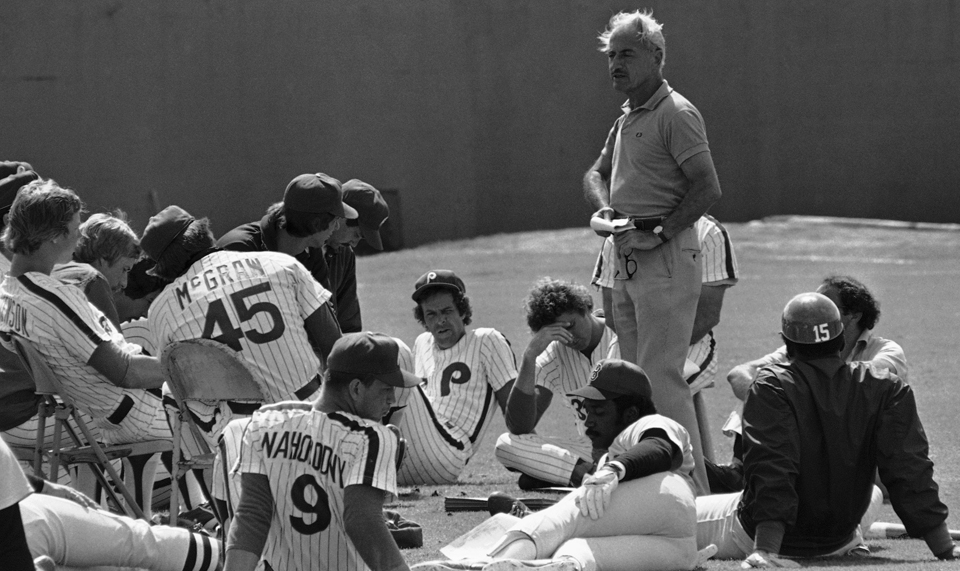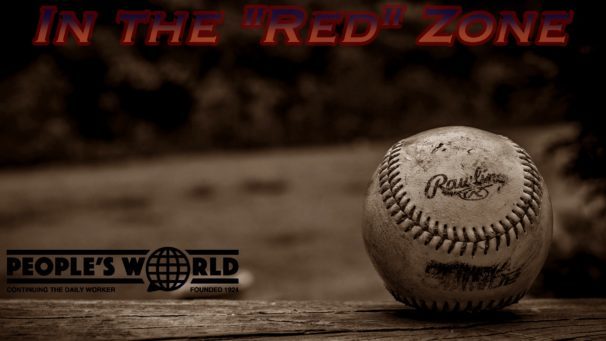
“I want you to understand that this is going to be an adversarial relationship. A union is not a social club. A union is a restraint on what an employer can otherwise do. If you expect the owners to like me, to praise me, to compliment me, you’ll be disappointed. In fact, if I’m elected and you find the owners telling you what a great guy I am, fire me! Don’t hesitate, because it can’t be that way if your director is doing his job. The owners loved Judge Cannon. Don’t make the same mistake with your new executive director.” – Marvin Miller
The year was 1965. Jackie Robinson had broken baseball’s color line 18 years prior in ’47, the Major League Baseball Players Association was only 12 years old, and the nation was still recovering from JFK’s assassination two years earlier.
Marvin Miller, the 48-year old mustachioed union man—chief economist—for the United Steel Workers of America, entered a Cleveland office, sat down, and came face to face with Robin Roberts (Phillies), Jim Bunning (Phillies), Harvey Kuenn (Cubs), and a few other members of the Players Association executive director screening committee on a chilly December day.
It was the job interview of a lifetime, and one of the hardest jobs to have in organized labor.
While in existence for 12 years, the MLBPA was powerless against the Major League bosses. They had held the reigns far too long, grown too comfortable with the system in place, and made sure nothing would change that.
At first, it didn’t even operate as a union, but rather as a loose coalition of players working together to earn a pension and benefits. Their first union “rep,” Robert “Judge” Cannon, a bona fide court judge who missed becoming MLB commissioner by one vote, was happy keeping the illusion of “labor peace” by towing the baseball bosses’ line.
This is how the Society for American Baseball remembers Cannon:
“When Cannon started meeting the players as he toured spring training camps, his message was simple: work with the owners. He constantly reminded the men how good they had it. He wanted the players to make no waves. Above all, the players should foster a greater relationship with the benevolent owners. In essence, Cannon was preaching to the players from the beginning, before he even met everyone and understood the demands and responsibilities entrusted to him. He never did grasp the industry from a player’s perspective.”
You repeat a lie enough times eventually it becomes truth. And for baseball players of that era, Cannon’s words caught them hook, line, and sinker.
Miller lays the groundwork
After months of traveling to spring training camp locations, meeting with players, coaches, and staff—and taking a lot of badmouthing from the press, owners, and managers, Miller was eventually elected as full-time executive director for the association.
Of the many headlines written about the players association’s search for a new director, the ones that stuck out to Miller: “Buck Rodgers Says, ‘We don’t want any labor boss,” and “‘Pro sports has no place for unions,’ says Joe Adcock.”
Rodgers was a catcher for the California Angels from 1961-69, while Adcock was first baseman for the Angels.
It’s hard to think of major league sports without strong players associations nowadays, but there we were.
“Though the people I would be representing were far better off than workers in any other union, representing them looked to be a tough job,” said Miller. “Players were not only ignorant about unions, they were positively hostile to the idea: They didn’t know what a union was, but they knew they didn’t want one. From the time immemorial, the baseball powers-that-be force-fed the players propaganda.”
Miller spent the next two years organizing players one-on-one, advocating on their behalf, working with each team’s player reps, listening to concerns, and learning from them. Going from big steel to professional sports was a huge leap, even for a lifelong baseball fan like Miller, who grew up rooting for the Brooklyn Dodgers.
The owners despised him and loathed the organizing wins. Instead, they fawned over those good ol’ days when they ran a “company union” in big league baseball.
History in the making
Those two years spent organizing on the road by Miller would pay off two-fold. By the time 1968 rolled around, players were “do or die” for the union, and that unity was untouchable by the bosse,s as the MLBPA negotiated and signed the first collective bargaining agreement in the history of professional sports.
That guaranteed two-year contract established a uniform contract league-wide, raised the minimum salary—in place for 20 years—from $6,000 to $10,000, and reduced pay cuts. More importantly, it put a stop to owners being able to make whatever changes they wanted and allowed players to finally take control of their workplace and work product. Their talents on the field made millions for the owners, and now the players demanded a say.
The first formal grievance procedure was introduced, spring training stipends went up, and players were able to finally recoup expenses.
Miller didn’t stop there, though.
During the lifetime of that first contract, he encouraged players to take direct action when needed—not signing contracts or showing up for spring training—in order to get increases for their pension fund following the revenue increases coming from the MLB television broadcast deal. It worked, too. Owners’ pension contributions went from $4.1 million per year to $5.45 million, with the time needed to qualify to receive the pension dropping from five years in the league to four.
By 1970, the players won a stronger grievance system, having independent arbitrators hear disputes instead of the MLB commissioner.
They got into baseball trading card action by forming the MLBPA commercial licensing firm, greatly improving the union’s early financial struggles.
And they had built enough power to win their first strike in ’72, leaving the MLB bosses regretting that they had called the union’s threat a mere bluff.
Because of those vicious fights in the majors, today we have unions and collective bargaining agreements in almost every major sport. (Let’s keep supporting Project Spearhead and their union fight against Dana White’s UFC.)
There’s much to be learned from the players’ fight against the big league. Most important: unity and determination in the face of insurmountable odds.
That’s something I think applies to all of us in the political age we find ourselves in.
To learn more about the MLBPA’s history, check out:
A Whole Different Ball Game: The Inside Story of the Baseball Revolution, by Marvin Miller
Baseball’s Power Shift: How the Players Union, the Fans, and the Media Changed American Sports Culture, by Krister Swanson
Like free stuff? So do we. Here at People’s World, we believe strongly in the mission of keeping the labor and democratic movements informed so they are prepared for the struggle. But we need your help. While our content is free for readers (something we are proud of) it takes money — a lot of it — to produce and cover the stories you see in our pages. Only you, our readers and supporters, can keep us going. Only you can make sure we keep the news that matters free of paywalls and advertisements. If you enjoy reading People’s World and the stories we bring you, support our work by becoming a $5 monthly sustainer today.

MOST POPULAR TODAY

High Court essentially bans demonstrations, freedom of assembly in Deep South

Zionist organizations leading campaign to stop ceasefire resolutions in D.C. area

UN warns that Israel is still blocking humanitarian aid to Gaza

U.S. imperialism’s ‘ironclad’ support for Israel increases fascist danger at home







Comments